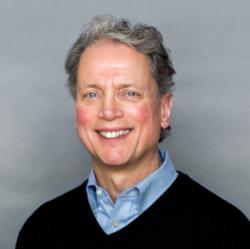Congress is debating a number of measures designed to “rescue” homeowners facing foreclosure as the housing and credit crisis grinds more and more financial and real estate assets to dust. Much of the reporting on the credit crisis, in the tradition of objective journalism, strains to explain the problem objectively, as if what was happening in the markets was somehow an act of nature, something unguided by human action. Thus, people “fell” into the problem as if pulled by a gravitational force:
Congress has been struggling for months to respond to a mortgage crisis that has left more than 1.2 million homes in foreclosure, with an additional 3 million forecast to join them over the next two years. Most involve subprime loans that established terms the borrowers could not afford. As homeowners defaulted and fell into foreclosure, home prices fell more than 10 percent. Many borrowers who are having trouble making payments find that they cannot sell or refinance their homes because they owe their banks more than their homes are worth.
But markets and industries and trade are guided by human beings, who have fairly well known tendencies. In “The Human Foundation of Financial Risk,” Alex J. Pollack of the American Enterprise Institute looks at that depressingly predictable mass hysteria that has propelled one financial bubble after another from the South Sea Bubble of 1720 and beyond. The “great twenty-first century housing and mortage bubble,” he argues, is just the most recent example.
Pollack notes how the mortgage securities market, looking out on a housing expansion that seemed unending, became “enamored” of statistical models of risk crafted by some of the best and brightest on Wall Street. How well did these arcane formulas come to grips with the human factor?, Pollack asks.
Did they pick up the effects of short memories–of the inclination to convince ourselves that we are experiencing “innovation” and “creativity” when all that is happening is a lowering of credit standards by new names–or of what are rightly considered unearned risk premiums being counted as profits and paid out as bonuses? Did the models adequately take into account the cumulative human forces of optimism, gullibility, short-term focus, genuine belief in momentum, extrapolation of so-far-profitable speculations, group psychology, and increasing fraud? Did the models keep up with the fact that as they were running, the behavior was changing? Obviously, they did not.
He reminds us that the reason financial bubbles are so seductive is that, for awhile at least, everyone associated does pretty well. Homeowners were getting more and more house with easier borrowing terms, lenders were generating profits from ever more creative strategies, and Wall Street was packaging and reselling this stuff to investors all over the world. All the while, Congress and the White House were crowing about ever higher levels of home ownership and participation in the American Dream.
Pollack points to the “widespread realization” in early 2007 that a large proportion of subprime mortages and subprime mortgage securities were going to default as the beginning of the end. It was the disillusion that crashed the party. “The end of belief ends the bubble and begins the bust,” Pollack writes. Let the panic begin.
We’re now in the early phase in what is likely to be a massive push in Washington to bring new regulation to the financial services industry and “rescue” more homeowners in an election year (but probably not the homeowners who have been paying their bills). Pollack again sees how this typically plays out:
In the wake of a bust, there is always a predictable series of political activities: first, the search for the guilty; second, the fall of previously esteemed heroes; and third, legislation and increased regulation to ensure that “this will never happen again.” But, with time, it always does happen again. Consider in this context the statement of the comptroller of the currency in 1914 that with the creation of the Federal Reserve, “financial and commercial crises, or panics . . . seem to be mathematically impossible.”
Pollack talks about the “cumulative human forces” behind the bust. From a Christian perspective, these “cumulative” factors would also include a healthy awareness of the reality of sin. There will always be the risk of cheating and greed and theft in financial affairs, personal and corporate. When that risk is inflated with the bubble, then its effects, as we have seen, may be impossible to contain. And no group caught up in the enthusiasm of the housing and mortgage bubble was immune from it — not the homeowner, not the lender, not the securities market.
The new risk we face is that the regulatory cure proposed by Washington will have it’s own illusions of “innovation” and “creativity” — with a naive belief in the power of government to make any more financial crises “impossible.” Federal bailouts for both bankers and borrowers are on the table. Over-reaction and over-regulation is likely to follow. There will be no discussions about the nature of sin in Congressional hearings, but there will be plenty of demons. Mostly, mortgage lenders. As Pollack observes, it’s all too predictable.

